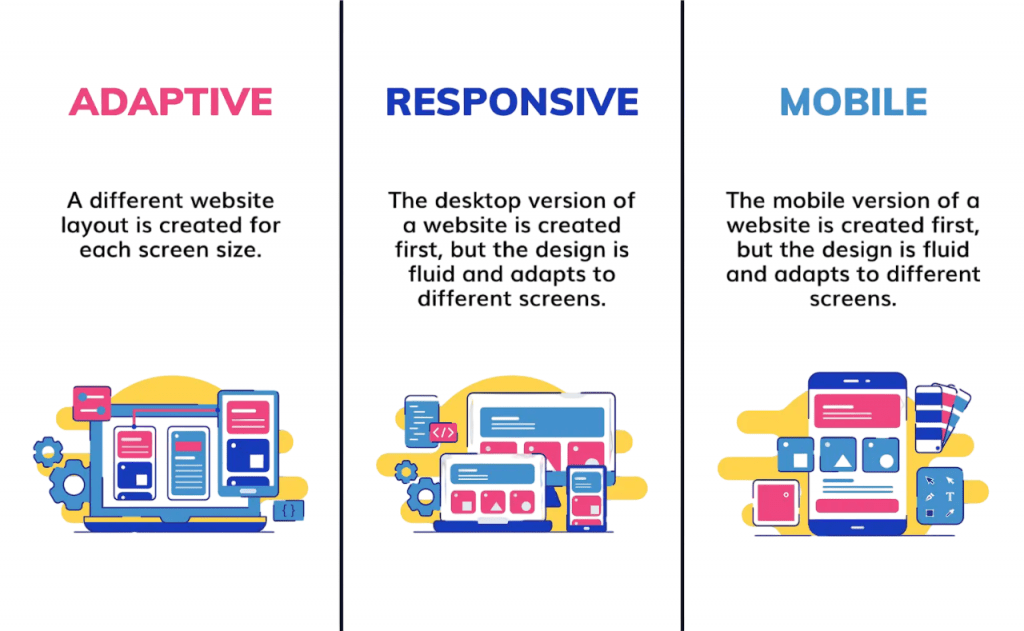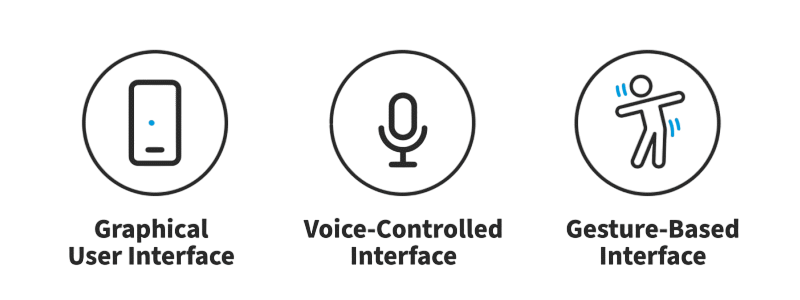
- Introduction to UI/UX Design
- Importance in Today’s Digital World
- Industry Trends and Innovations
- Mobile-First and Responsive Design
- AI Integration in Design
- Voice and Gesture Interfaces
- Role of Accessibility and Inclusivity
- Global Market Trends
- Tool Advancements and Automation
- Conclusion
Introduction to UI/UX Design
In today’s fast-changing digital world, UI/UX design has become essential for product success. It directly affects how users interact with products and the overall results for businesses. As users expect smooth, personalized digital experiences across different platforms, well-made interfaces are no longer just attractive features; they are important business tools making UI/UX Training essential for mastering design principles, prototyping techniques, and user research that drive engagement and usability. Good UI/UX design helps keep users engaged by creating easy-to-use experiences. This reduces bounce rates and encourages users to keep interacting with the product. Additionally, effective design can boost conversion rates for online sales, app downloads, or service subscriptions. This, in turn, leads to real revenue growth. Beyond immediate financial gains, great design builds brand trust and credibility, which sets companies apart in crowded markets. By focusing on accessibility and inclusive design, businesses can reach a wider audience and show their dedication to meeting diverse user needs. This strategy helps them gain an advantage in a more digital world.
Importance in Today’s Digital World
In today’s fast-changing digital world, UI/UX design has become essential for product success. It directly affects how users interact with products and the overall results for businesses. As users expect smooth, personalized digital experiences across different platforms, well-made interfaces are no longer just attractive features; they are important business tools. Good UI/UX design helps keep users engaged by creating easy-to-use experiences. This reduces bounce rates and encourages users to keep interacting with the product. Additionally, effective design can boost conversion rates for online sales, app downloads, or service subscriptions. This, in turn, leads to real revenue growth. Beyond immediate financial gains, great design builds brand trust and credibility, which sets companies apart in crowded markets. By focusing on accessibility and inclusive design, businesses can reach a wider audience and show their dedication to meeting diverse user needs. This strategy helps them gain an advantage in a more digital world.
Industry Trends and Innovations
The field of UI/UX design is dynamic, evolving alongside technology and user behavior. Some key trends and innovations shaping the industry today include:
- Minimalism and Clean Design: Users gravitate towards uncluttered, straightforward interfaces that emphasize essential functions. Minimalism reduces cognitive load and enhances usability.
- Micro-Interactions: Small, subtle animations like button hovers, loading indicators, or feedback sounds improve interactivity and guide users without overwhelming them.
- Voice User Interfaces (VUI): With smart assistants gaining popularity, voice commands have become a new interface paradigm requiring new UX considerations.
- Augmented Reality (AR) and Virtual Reality (VR): Immersive technologies expand visual design beyond 2D screens, demanding innovative UX strategies for spatial interactions.
- Dark Mode: Dark themes reduce eye strain and conserve battery on OLED screens, becoming a standard option in many apps.
- Personalization with AI: AI enables tailored experiences by adapting content and interface elements based on user behavior and preferences.
- Inclusive and Ethical Design: Designers are increasingly focusing on accessibility, privacy, and ethical use of data to create responsible digital products.
Ready to Get Certified in UI/UX Design? Explore the Program Now UI/UX Design Online Training Offered By ACTE Right Now!
Mobile-First and Responsive Design
Mobile devices now dominate digital consumption, making mobile-first design the standard practice. Mobile-first means designing the experience for the smallest screen first, then scaling up to larger screens.
- Mobile users expect fast load times and simplified navigation.
- Smaller screens force prioritization of content and features.
- Touch interactions require larger buttons and intuitive gestures.
Why Mobile-First?
Responsive Design
Responsive design ensures a product adapts fluidly to different screen sizes and orientations from smartphones to tablets, desktops, and smart TVs. Techniques such as flexible grids, scalable images, and CSS media queries help achieve this adaptability. Mobile-first and responsive approaches enhance usability and accessibility across devices,portfolio increasing overall user satisfaction.

AI Integration in Design
Artificial Intelligence (AI) is changing UI/UX design by offering new levels of personalization, automation, and insights based on data. By using algorithms, AI allows designers to customize interfaces and content in real-time. It analyzes user data to create experiences that are more relevant and engaging. With its predictive abilities, AI can guess what users want and suggest actions that make workflows smoother and interactions easier. Features like chatbots and virtual assistants offer real-time, hands-on support within digital interfaces, which boosts user engagement making UI/UX Training essential for designing intuitive, responsive, and user-centric experiences that align with modern expectations. AI-powered design tools are changing how creative work gets done by handling routine tasks, producing different design options, and adjusting layouts according to user interaction data. Additionally, AI can analyze user behavior and feedback on a large scale, helping designers make better choices and improve digital experiences over time. This integration of technology is deeply changing design methods, allowing for the creation of smarter, more flexible, and user-focused digital environments that respond to individual user needs and preferences.
To Explore UI/UX in Depth, Check Out Our Comprehensive UI/UX Online Training To Gain Insights From Our Experts!
Voice and Gesture Interfaces
Voice and gesture-based interfaces are changing how we interact with technology. They offer more natural and hands-free experiences. Voice User Interfaces (VUIs) and gesture recognition technologies are leading us into a new era of intuitive device control. Users can engage with digital systems using advanced speech recognition and body movements.

Role of Accessibility and Inclusivity
Designing accessible and inclusive experiences is essential ethically and legally.
- Accessibility: Ensures digital products are usable by people with disabilities (visual, auditory, motor, cognitive). Guidelines such as WCAG help designers create accessible content.
- Inclusivity: Extends beyond disabilities to cultural, linguistic, and socioeconomic diversity, ensuring products serve a wide range of users.
Benefits
- Expands user base
- Improves overall usability
- Demonstrates social responsibility and compliance
Looking to UI/UX Training? Discover the UI/UX Design Expert Masters Program Training Course Available at ACTE Now!
Global Market Trends
- Regional Growth: North America and Europe lead in UX maturity. Asia-Pacific markets are growing fast due to mobile penetration. Emerging markets are investing heavily in digital transformation.
- Industry Adoption: Finance, healthcare, e-commerce, education, and entertainment sectors heavily prioritize UI/UX design scope.
- Design Systems: Organizations build reusable design systems to maintain consistency and speed up development.
Tool Advancements and Automation
Design tools have evolved significantly, integrating automation and collaboration features.
- Figma: Cloud-based design and real-time collaboration
- Adobe XD: Prototyping and voice design
- Sketch: Popular vector-based design for Mac
- InVision: Prototyping and developer handoff
- Automation & AI: Auto-layout, smart suggestions, AI-driven image editing, and design system management speed workflows.
- Collaboration: Cloud tools allow designers, developers, and stakeholders to work synchronously, reducing feedback cycles.
Popular Tools
Preparing for UI/UX Design Job Interviews? Have a Look at Our Blog on UI/UX Design Interview Questions and Answers To Ace Your Interview!
Conclusion
UI/UX design is poised to become even more critical as technology evolves and user expectations rise. Emerging interfaces like AR/VR, Adobe XD, voice, and AI-driven personalization will require new design paradigms making UI/UX Training critical for mastering the tools, principles, and adaptive strategies needed to build intuitive, future-ready user experiences. Career opportunities will continue to grow with increasing demand worldwide, especially as companies focus on user-centered innovation. Accessibility and ethical design will remain paramount to ensure digital products serve all users fairly.For aspiring designers, mastering current tools, embracing lifelong learning, and wireframing understanding emerging technologies will be key to success in this dynamic and rewarding field.



